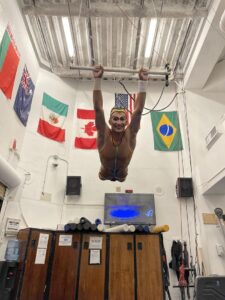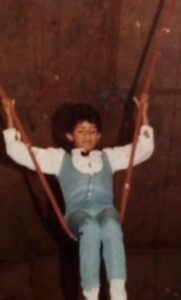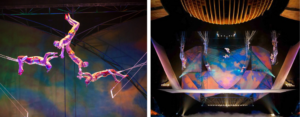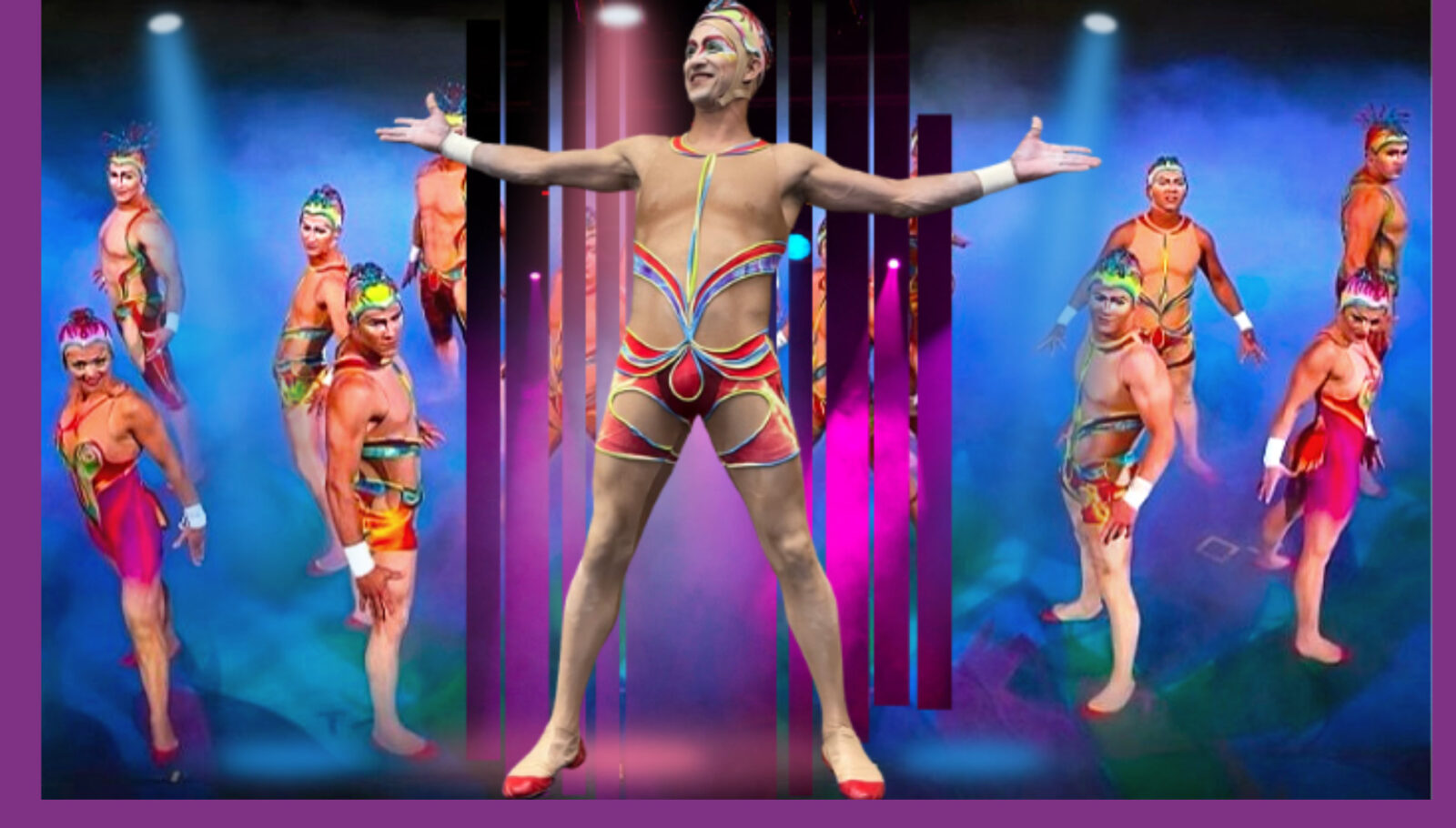Losing Fears and Facing Dangers: Trapeze and Family Life with Cirque du Soleil’s Jerry Estefano Navas
Sometimes circus is in the blood—but it also comes from years of hard work, of honing one’s skills through practicing behind the scenes. Coming from one of Ecuador’s top circus families, Jerry Estefano Navas, a veteran trapeze artist and featured flyer in Cirque du Soleil’s MYSTERE, weighs in on family ties and earning his applause.

Throughout a career that spans more than four decades, Ecuadorian flying trapeze artist (and lifelong family man!) Jerry Navas Stefano has constantly sought to reach new heights, both as a performer and as a husband, son, and parent. Born to a poor community in Santa Rosa, El Oro, Jerry has since birth been surrounded by the circus; his relatives, the Flying Navas, took home the Silver Clown at the 14th Monte Carlo festival with their multiple trapeze act, and his father Leonardo made use of his skillset and the Navas pedigree to tour across South America with his family. It was by watching his father perform trapeze before an audience as a young child that Jerry found himself longing to join the show, to be a part of things on and above the stage. And in the next forty-odd years, he would go on to do just that.
Holding onto the fly bar tightly, Jerry and his trapeze have soared in Big Top tents and theatres across three continents and toured with everyone from the Gasca Brothers to the Royal London Circus to UniverSoul. Since 2007, he has been a part of Cirque du Soleil, joining the cast of ZED in Tokyo before taking the Vegas stage as part of the permanent show MYSTERE alongside his half-brother, Richard Víctor Narya Galvis, and brother-in-law Pedro Farfan, doing whatever they can to make their audience cheer. He’s also shared a spotlight with his wife of 30 years, Mónica, a member of the Mitrovich circus family. At every step of Jerry’s journey, his family and friends have been there to help him find his footing as a performer and guide him to the next arena.
We asked Jerry to catch us up on his performance background, his family life, his dreams, and the people who have helped him to achieve them.
Carolyn Klein (CK): What first inspired you to pursue a career in circus?

Jerry Navas Stefano (JNS): My father. He was a very good artist in his day and took advantage of working with the best circuses of Latin America, performing his head (or Washington) trapeze act. It was very dangerous, because he did it without any protection. I used to watch him once I was already of an age where I could understand that; if I remember correctly, I was eight years old then, and I saw how much he enjoyed what he was doing, how he received the public’s applause… how he strove more and more each day to be the best in his art. That is how I fell in love with circus as a child.
I wanted to be like him. I wanted to know how it felt being on stage and to experience the feeling that everyone is looking at you, appreciating what you do for them. But I realized that I did not yet have the experience my father had. So I took my time, but I did not give up. My desire to be an artist and receive applause drove me to try harder, to lose my fear and face the danger of it.

CK: And how did you face that danger?
JNS: It was not an easy process. My father did everything he could to protect me. So I asked my uncle, Ray Valderrama, if he could teach me some type of act that I could do by myself. My uncle, with great patience, taught me the Japanese wave act, as it was called in those days—I don’t know if the name has been changed since. This act requires a U-shaped rope with a bridge made of the same material, hanging off the cupola by way of two poles. I would perform it from about two meters off the ground because, due to my young age, I could not do it too high yet. That was my first act, and I enjoyed it a lot until I was 15.
I wanted more, though: I wanted an act that would allow me to leave and see the world. I always found flying trapeze work exciting, but, for me, it seemed impossible to reach the same level as the Flying Navas.
So I set a goal for myself to learn their multiple trapeze act along with my brother, Elio, and my cousins Alfredo and Atuane, because we were all family and had grown up traveling throughout Ecuador on tours together. It wasn’t easy, but with enough effort and dedication, I succeeded in achieving my goal.
As I gradually developed my skills performing multiple trapeze, I also appeared in other acts over the years, like the elastic bed, the balanced wire, an act with horses, and the pendulum of death. What I desired most, however, was to be an artist of renown, without diminishing the people who do some of the acts I mentioned.
Soon I was given the opportunity to go abroad and get to know other countries. Now, many years later, I realize how good it feels to have the public’s respect, and how they appreciate the effort it has cost me to be recognized. Not only in Ecuador, but all over the world. I feel fortunate to have reached that goal.

CK: You and your wife, Mónica, are both from prominent circus families. How did you two meet, and how do you share that circus culture with your children?
JNS: In 1987, I was visiting my family in Colombia, where Monica is from, and this is where we met for the first time. Back then, she was an artist with the Mexican circus Circo Hermanos Fuentes Gasca [the Gasca Brothers Circus], which was touring in Bogota. My mother, stepfather, and brother were working in the same circus, so Monica and I were introduced to each other backstage.
We met again in 1990 when Hermanos Fuentes Gasca came to my home country of Ecuador. We reconnected and, from that point on, became a couple. We married in 1998, when both of us were performing at the Royal London Circus in Malaysia. She has helped and supported me in the most difficult moments.
Monica and I have two children: my older son, Deive Navas (30 y), and my younger son Jerry Josue Navas (20 y). Only Deive tried trapeze. He performed with me at the Circo de Valentino in Valenzuela for a year when he was 14 years old, but stopped once I began to work with Cirque, where stricter rules prohibited the children of artists from trying things out on their training equipment. At this point, we know that I am the last generation of artists in my family.
CK: You’ve also mentioned your big dream of working in the United States. What first made you want to perform there?
JNS: I knew I could achieve more fame by working in the U.S. and take my career to the next level. The U.S. also provides better working conditions for artists. And, well, I will not hide the fact that circus artists earn significantly more in the U.S. than in many other places in the world, so the desire to make a better living for myself and my family was also a strong factor.
CK: In your experience, what are the biggest similarities and differences between North and South American circus? How did you adjust to them? (Or, maybe more to the point—what was the biggest “culture shock” you’ve faced in your time with Cirque du Soleil?)
JNS: The biggest difference is that in South America, most circuses are touring shows, while in North America there are plenty of permanent ones. Also, South American circus is still very traditional, with shows that include animals and announcers. In North America, there has been a strong shift toward Cirque du Soleil-type shows.
Before I joined Cirque du Soleil, I had already worked in the United States from 2000-2002 when touring with the UniverSoul Circus. So, when coming back to work here in 2012, I was already accustomed to life in America. My entire family—children included—have traveled the world extensively, which must have helped us adjust to the U.S. without experiencing much of a culture shock.

CK: Tell us about some of the people you are most grateful to for helping you become the artist you are today.
JNS: First and foremost, my father, Leonardo Navas. I still go back in time and remember those marvelous years of my childhood when I used to see him at center stage, receiving the applause of the spectators.
Also, my uncle Ray Valderrama, a first-generation circus artist from Peru who passed away in 2009. Ray and his family owned and operated the Circus Valderrama. Seeing my interest in circus from early childhood, he also taught me how to perform trapeze.
Mr. Martín Fuentes Gasca, who gave me the chance to work with my mother and brothers at the Hermanos Gasca Fuentes in Columbia. I worked there for five wonderful years thanks to this opportunity.
I am also grateful to my brother Elio and my half-brother Richard, who taught me a lot about the nuances of timing in trapeze and helped me perfect my act.
I thank everyone who has helped me when I was a child, an adolescent, and now as an adult. I continue to learn, but I never forget those who helped me when I needed it most.
CK: How do you stay connected with your extended family?
JNS: It is easier now with social media—so via Zoom, Facebook, Instagram, etc. Since visas to the U.S. are not so easy to obtain, I haven’t seen many of my extended family members for years. My half-brother Richard is a U.S. citizen; he lives here in Las Vegas with my mother, Guadalope Estefano. We see each other very often—in fact, we live within walking distance of each other.
CK: What would you call the proudest moment of your career so far?
JNS: Getting recruited by Cirque du Soleil. A contract with this company is of paramount prestige, and having performed with them for over 15 years gives me that extra layer of pride! I am very happy to continue with them for many years to come.

Do you have a story to share? Submit your news story, article or press release.





